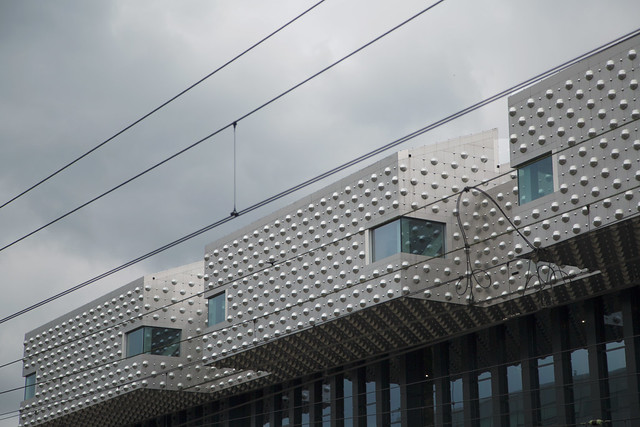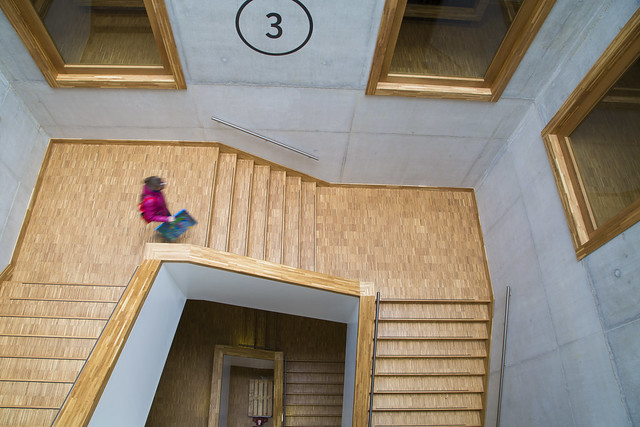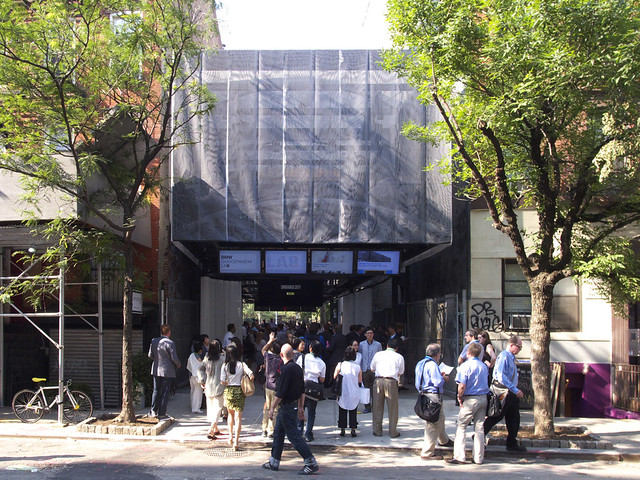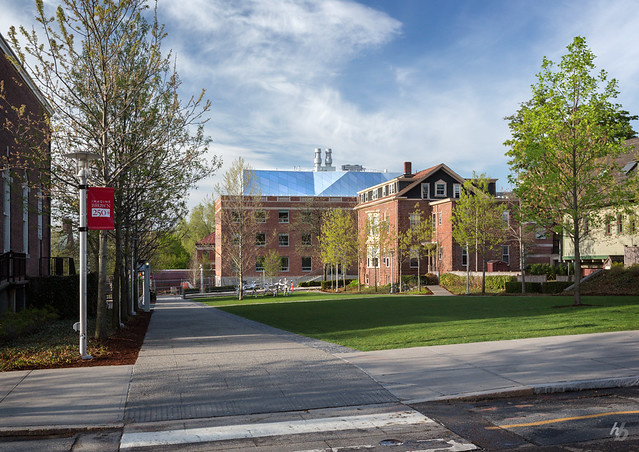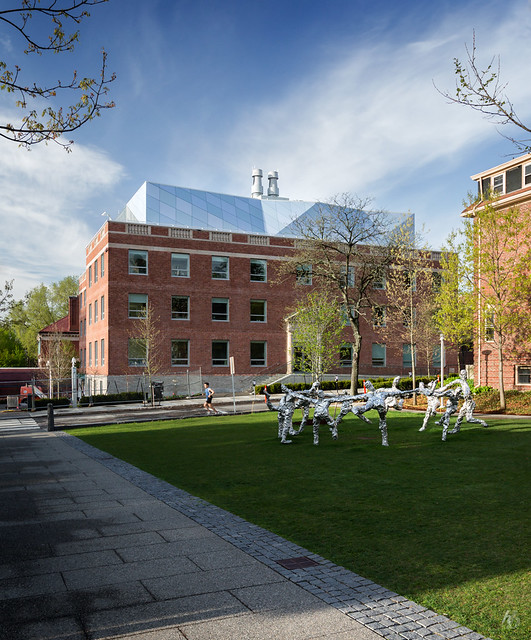Here are some of my photos of the John Jay College of Criminal Justice in New York City by SOM. The building is a cube-like addition on 11th Avenue that is connected to the existing school on 10th Avenue via a long concourse that is capped by a green roof.
The west-facing elevation on 11th Avenue, at West 58th Street:
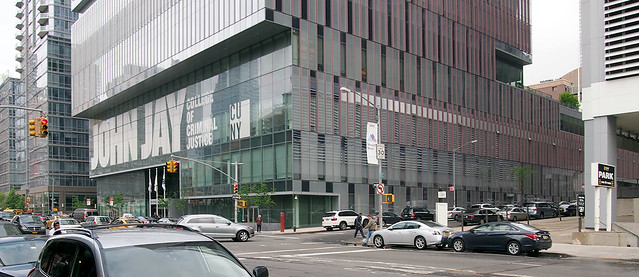
A close-up of the addition's elevation on West 59th Street:
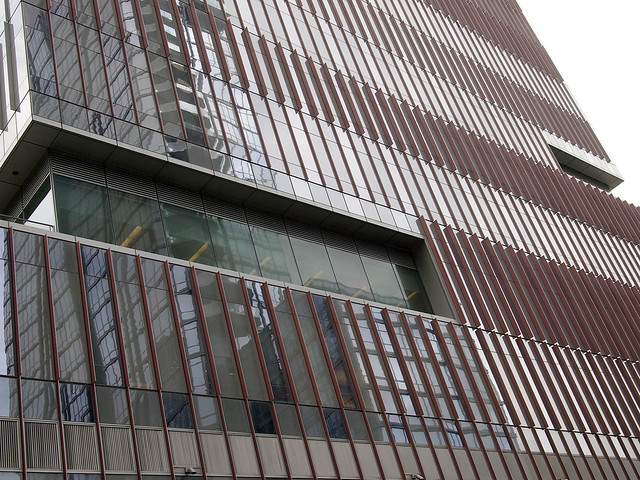
Looking west along West 59th Street; the main entrance is in the foreground:
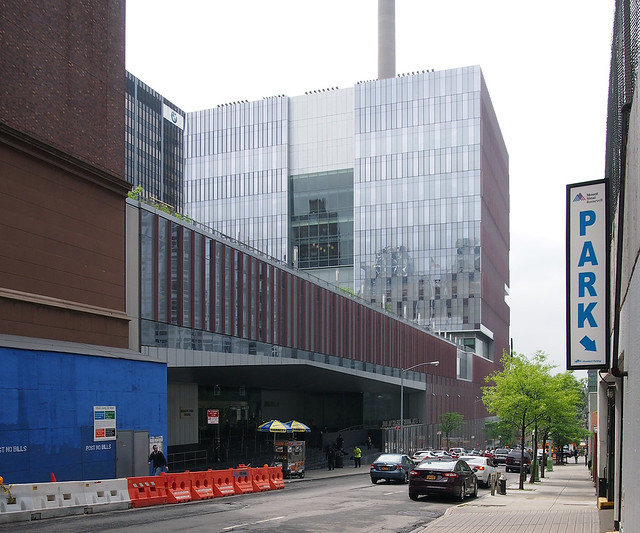
Another view of the main entrance:
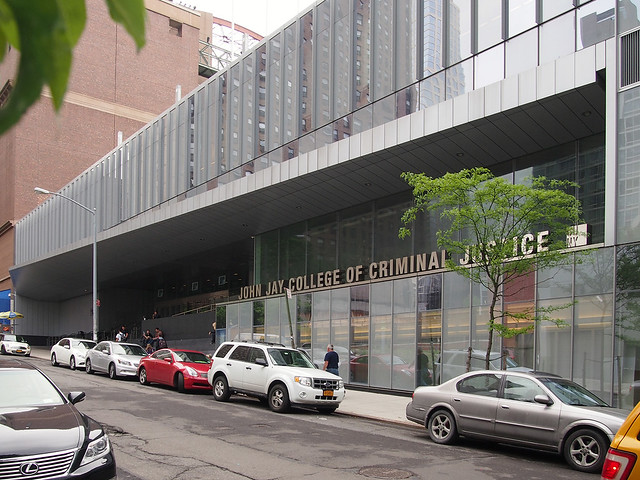
A close-up of the main entrance:
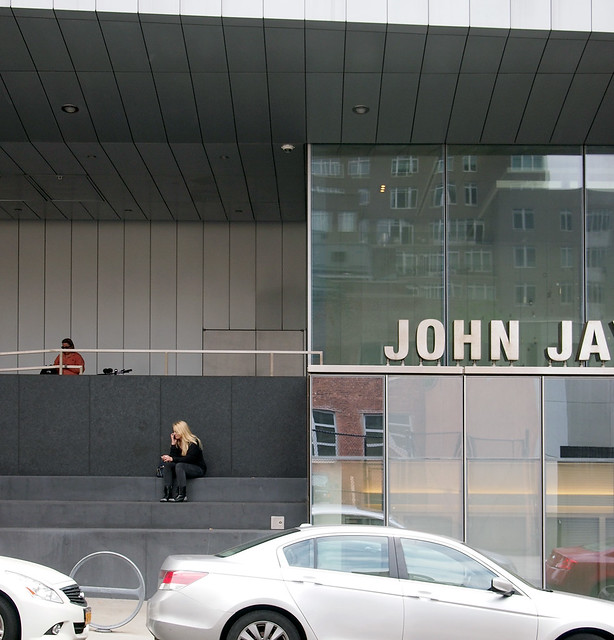
The main-entrance signage from the other side:
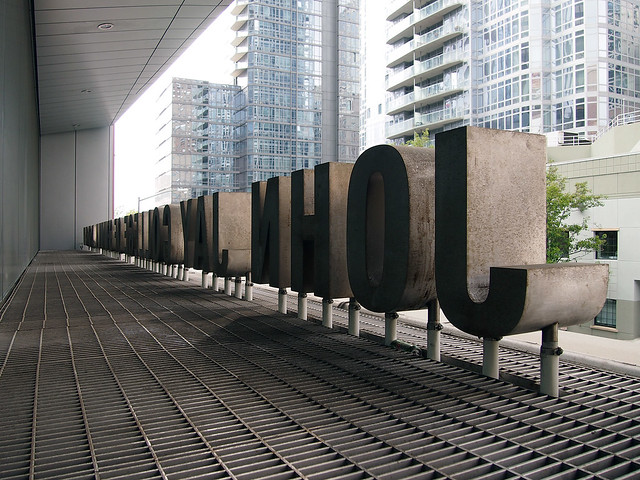
The main entrance drops people into this light-filled space at the eastern end of the concourse:
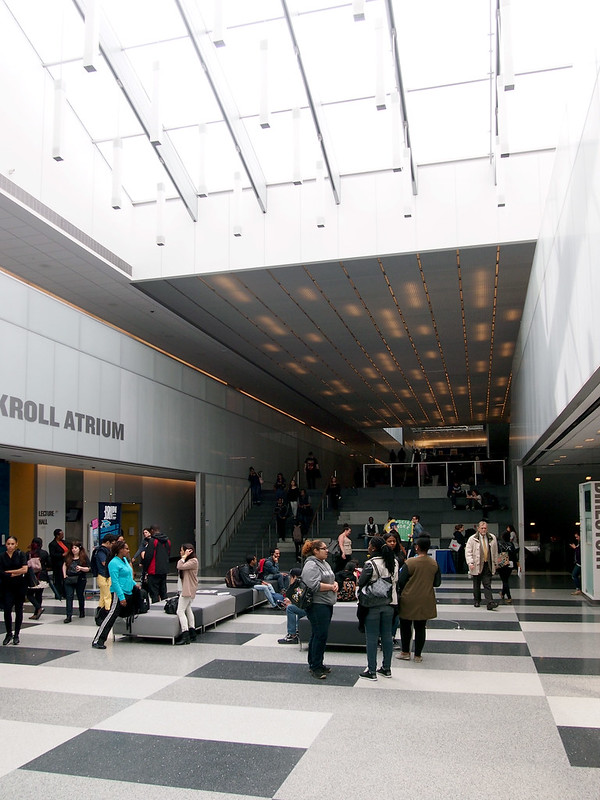
A view of the skylight from the mezzanine:
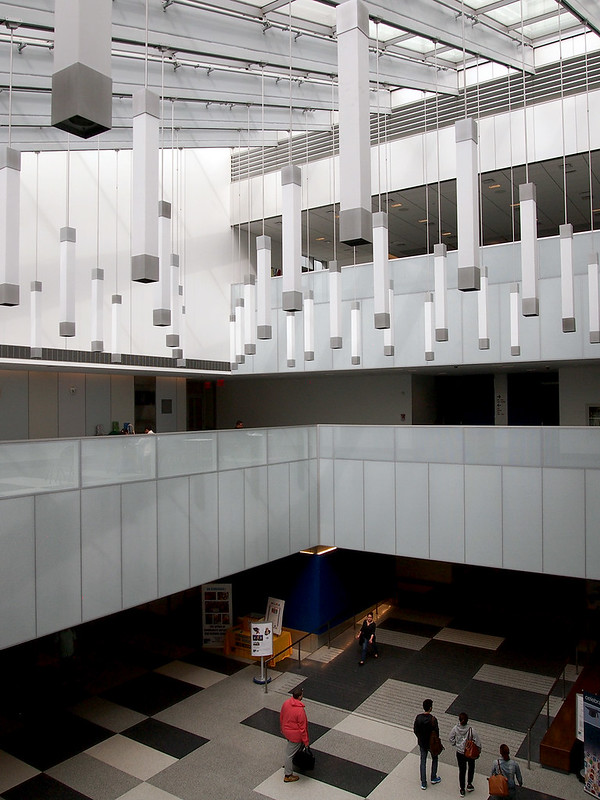
And a close-up of the lighting below the skylight:
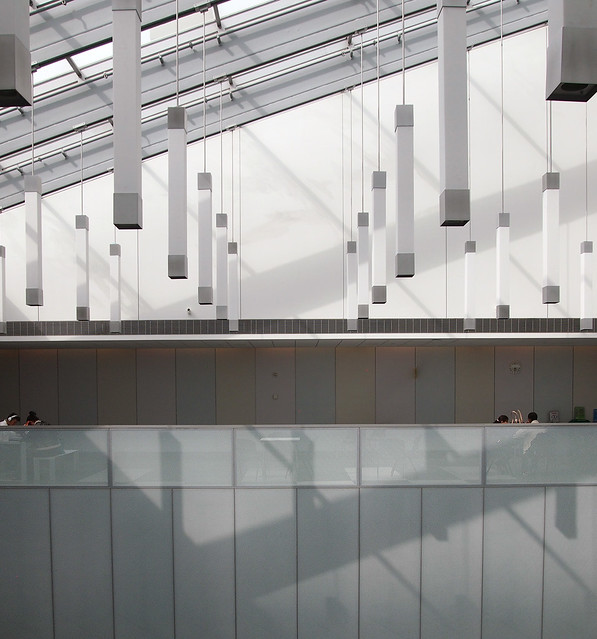
Moving west along the main level of the concourse:
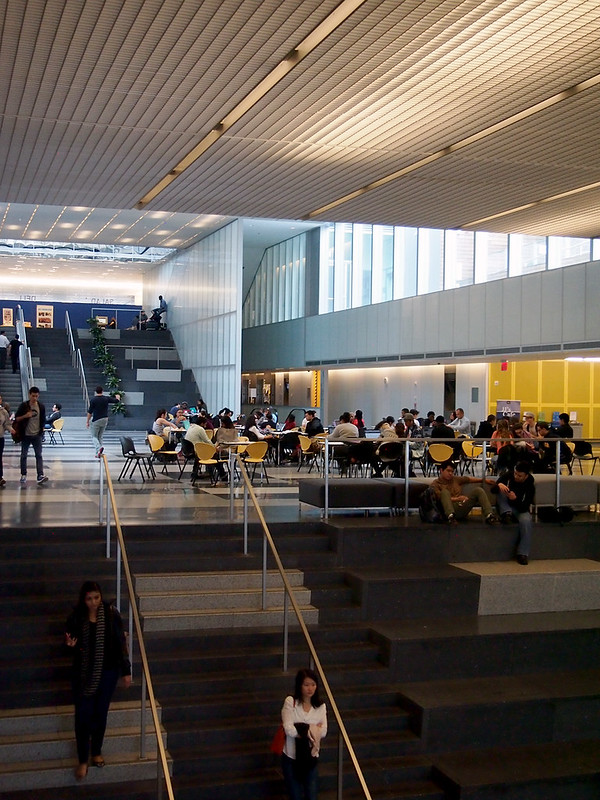
A little bit more west:
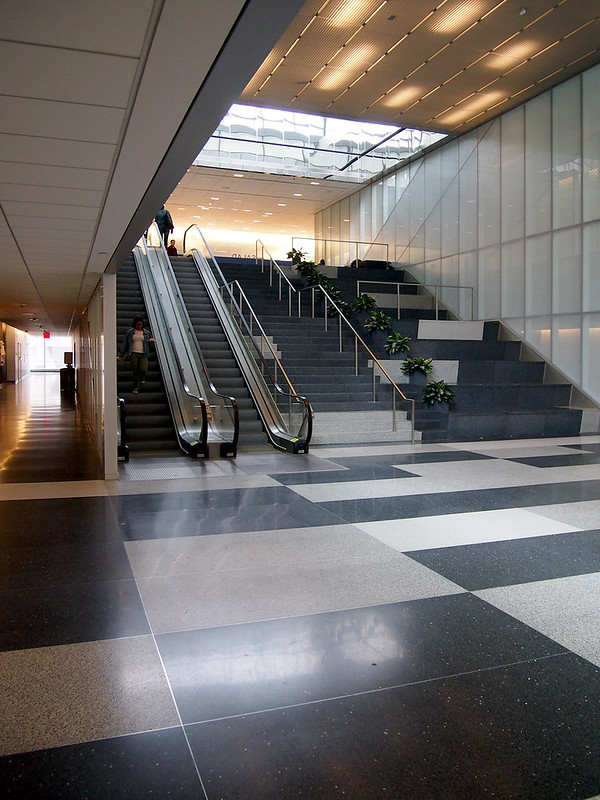
The steps and seating at the western end of the concourse:
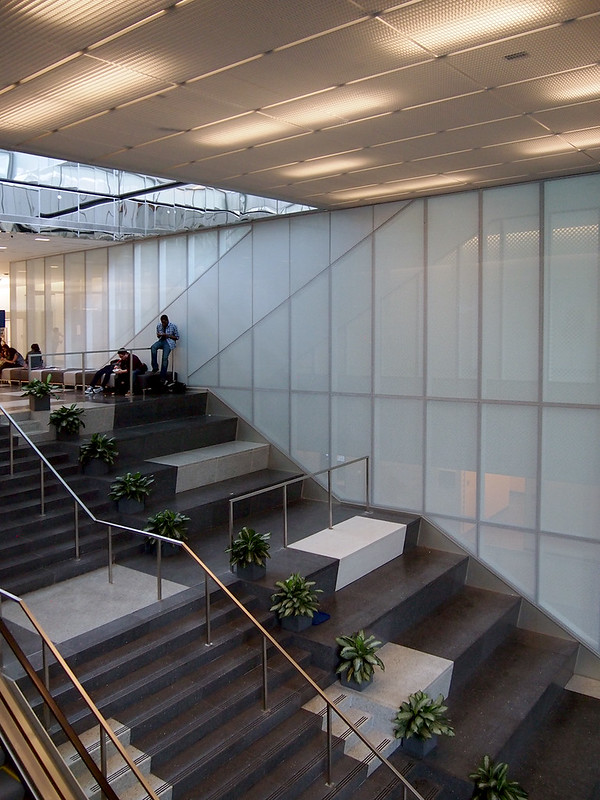
A view from atop those steps, looking east:
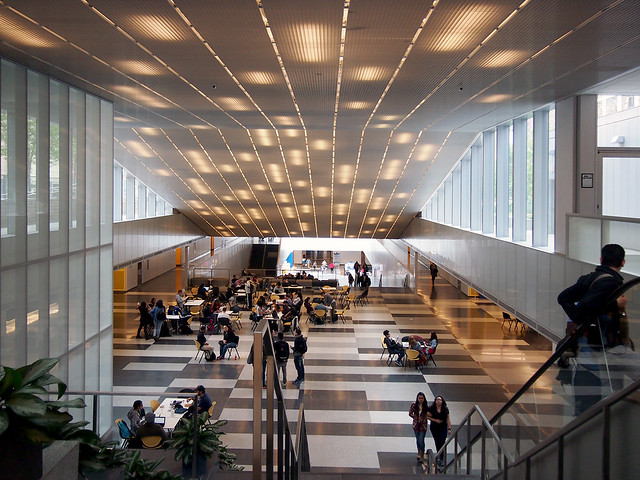
The 11th Avenue entrance; this seating area is where The Good Wife filmed a scene (with the school posing as an FBI building):
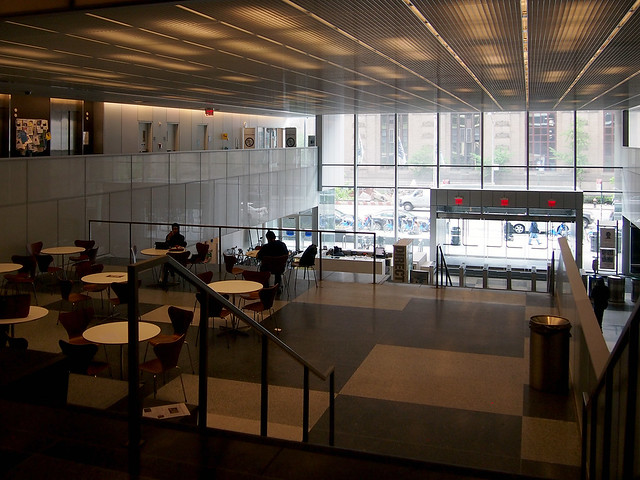
The 11th Avenue entrance, looking the other way (this entrance is entered below the big "JAY" lettering visible in the first photo):

Up on the green roof above the concourse, looking west toward the addition:
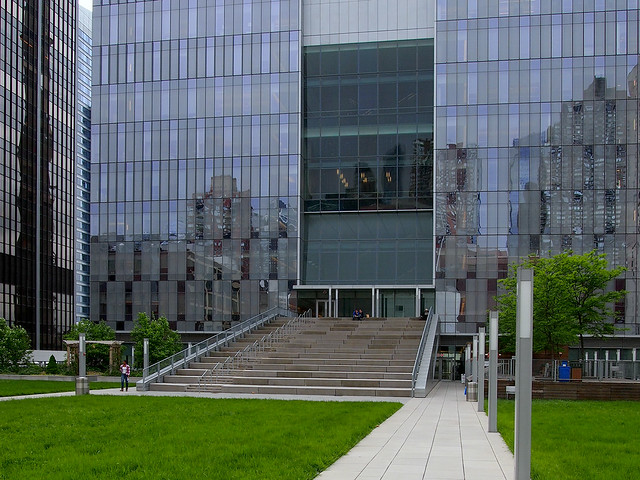
Atop the steps visible in the previous photo, looking east:
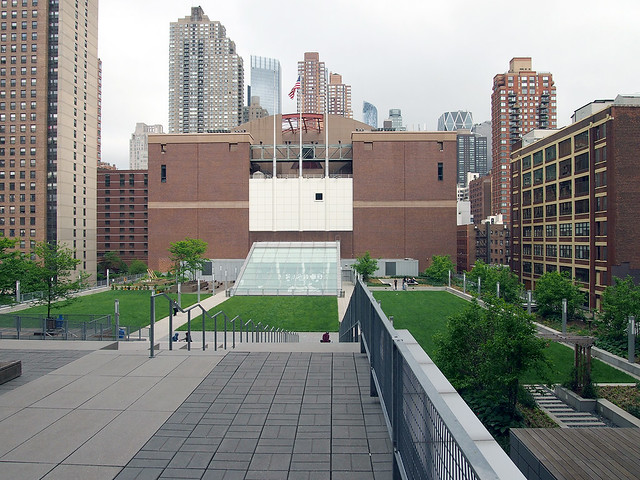
Turning left 90-degrees from the previous photo to look at the fins on the addition:
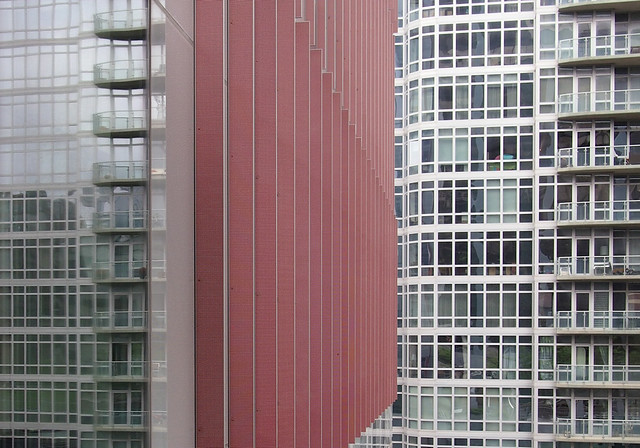
The red is made up of a grid of small dots:

Heading up the 8th-floor lounge in the addition:
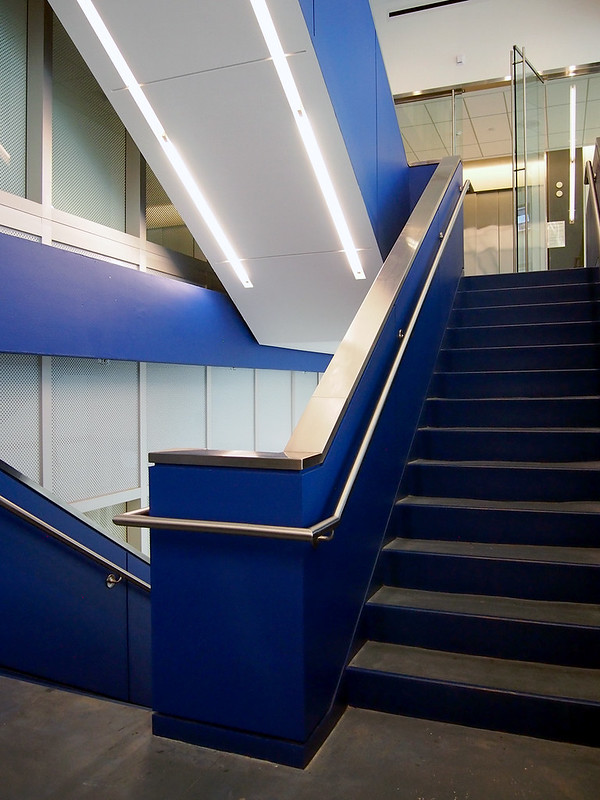
The east-looking view from the lounge:
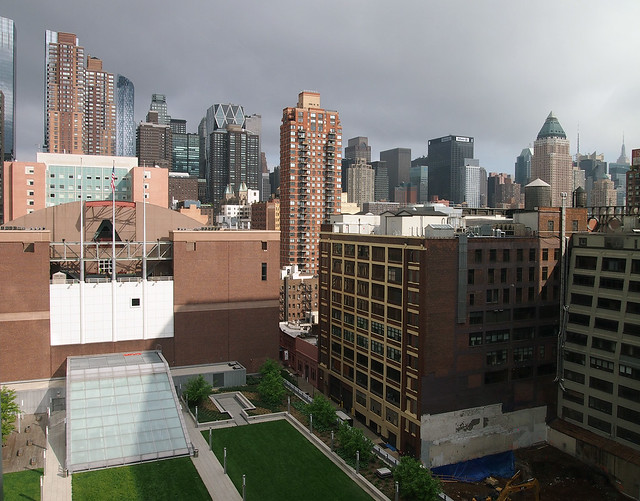
(Many thanks to Holly K. for the tour of John Jay!)
The west-facing elevation on 11th Avenue, at West 58th Street:

A close-up of the addition's elevation on West 59th Street:

Looking west along West 59th Street; the main entrance is in the foreground:

Another view of the main entrance:

A close-up of the main entrance:

The main-entrance signage from the other side:

The main entrance drops people into this light-filled space at the eastern end of the concourse:

A view of the skylight from the mezzanine:

And a close-up of the lighting below the skylight:

Moving west along the main level of the concourse:

A little bit more west:

The steps and seating at the western end of the concourse:

A view from atop those steps, looking east:

The 11th Avenue entrance; this seating area is where The Good Wife filmed a scene (with the school posing as an FBI building):

The 11th Avenue entrance, looking the other way (this entrance is entered below the big "JAY" lettering visible in the first photo):

Up on the green roof above the concourse, looking west toward the addition:

Atop the steps visible in the previous photo, looking east:

Turning left 90-degrees from the previous photo to look at the fins on the addition:

The red is made up of a grid of small dots:

Heading up the 8th-floor lounge in the addition:

The east-looking view from the lounge:

(Many thanks to Holly K. for the tour of John Jay!)
